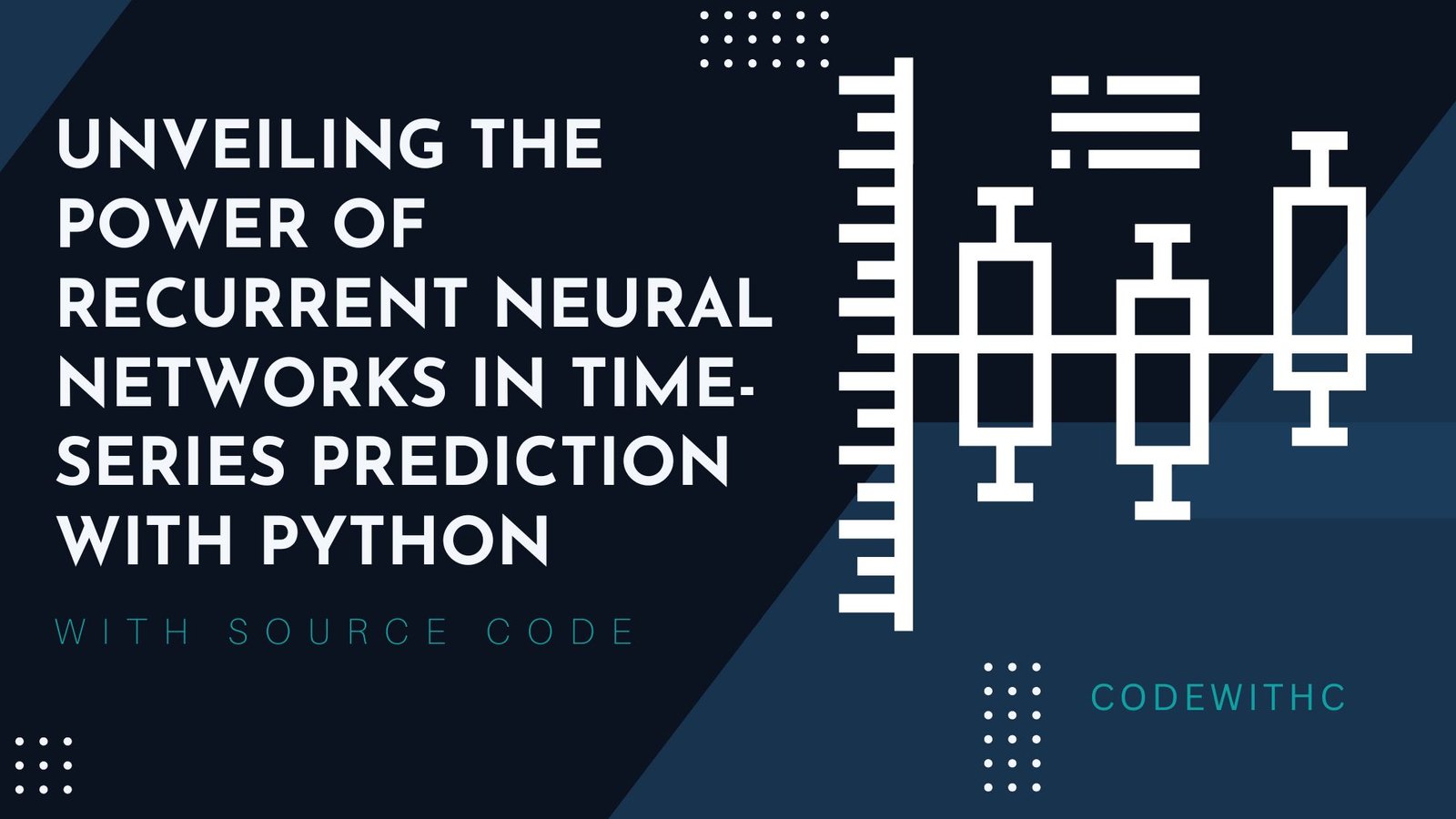In the fast-paced world of machine learning, one family of models stands out for its ability to work with sequential data: Recurrent Neural Networks (RNNs). Whether it’s stock prices, weather data, or human speech, RNNs have proven to be a formidable tool. In this article, we will embark on a detailed exploration of RNNs, with a specific focus on using Python and TensorFlow to implement these powerful algorithms for time-series prediction.
The Essence of Recurrent Neural Networks
RNNs are a type of neural network designed for sequence data. Unlike traditional feedforward networks, RNNs have a memory that captures information about previous steps in the sequence, making them ideal for tasks where context and history are important.
Anatomy of an RNN Cell
The basic building block of an RNN is the cell. The cell takes two inputs: the current input data and the previous hidden state. It combines these to produce an output and a new hidden state, which is passed to the next cell in sequence.
Sample Code: Basic RNN Cell in TensorFlow
import tensorflow as tf
# Define an RNN cell
rnn_cell = tf.keras.layers.SimpleRNNCell(10)
# Example input
input_data = tf.constant([[1.0, 2.0, 3.0]])
# Initial hidden state
initial_state = rnn_cell.get_initial_state(batch_size=1, dtype=tf.float32)
# RNN output
output, new_state = rnn_cell(input_data, initial_state)
# Print the output
print(output)
Expected Output
<tf.Tensor 'simple_rnn_cell/strided_slice_2:0' shape=(1, 10) dtype=float32>
Code Explanation
- We import TensorFlow and create a simple RNN cell with 10 units.
- We then define a sample input data tensor and an initial hidden state.
- The RNN cell takes these inputs and produces an output, as well as a new hidden state that can be passed to the next cell in the sequence.
Time-Series Prediction: A Practical Application of RNNs
Time-series prediction is one of the most common applications of RNNs. This involves training a model on historical time-series data to predict future values.
Preprocessing Time-Series Data for RNNs
Before we can train our RNN, we need to preprocess our time-series data. This often involves normalizing the data and transforming it into a format suitable for training a sequence model.
Sample Code: Preprocessing Time-Series Data
import numpy as np
# Generate synthetic time-series data
time = np.arange(0, 100, 0.1)
sin_wave = np.sin(time)
# Normalize the data
normalized_data = (sin_wave - np.mean(sin_wave)) / np.std(sin_wave)
# Create sequences
sequence_length = 10
X = [normalized_data[i:i+sequence_length] for i in range(len(normalized_data)-sequence_length)]
y = [normalized_data[i+sequence_length] for i in range(len(normalized_data)-sequence_length)]
# Convert to numpy arrays
X = np.array(X)
y = np.array(y)
# Print the shape of X and y
print(X.shape, y.shape)
Expected Output
(990, 10) (990,)
Code Explanation
- We generate synthetic time-series data, a simple sine wave in this case.
- We normalize this data to have zero mean and unit variance, which generally helps the training process.
- We then create sequences of a fixed length (10 in this case) from this data. Each sequence is used as input to predict the next value in the time series.
Training the RNN for Time-Series Prediction
With our preprocessed data, we can now train our RNN to predict future values based on past observations.
Sample Code: Building and Training an RNN in TensorFlow
# ... Continued from the previous code
# Build the RNN model
model = tf.keras.Sequential([
tf.keras.layers.SimpleRNN(20, return_sequences=True, input_shape=(sequence_length, 1)),
tf.keras.layers.SimpleRNN(20),
tf.keras.layers.Dense(1)
])
# Compile the model
model.compile(optimizer='adam', loss='mse')
# Train the model
model.fit(X[:, :, np.newaxis], y, epochs=50)
Code Explanation
- We build a simple RNN model using TensorFlow’s Keras API. The model consists of two RNN layers followed by a dense layer that outputs the predicted next value.
- We compile the model with the Adam optimizer and mean squared error loss function, which are common choices for regression tasks.
- We then train the model using our preprocessed time-series data.
The Future of RNNs: Beyond Time-Series Prediction
While time-series prediction is a valuable application, RNNs are not limited to this task. They are also used in natural language processing, music generation, and more. As RNNs continue to evolve, we can expect them to play a pivotal role in an increasingly wide array of complex, sequential data tasks.
Conclusion
Recurrent Neural Networks represent a significant step forward in the world of machine learning algorithms. With their capacity to understand the temporal dynamics of data, they open up new possibilities in various domains, from financial forecasting to speech recognition and beyond.







